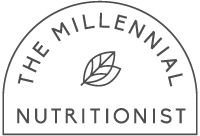Microplastics: What are They and How to Reduce Your Exposure | Dietitian Review
By: Courtney McMahan BS, RD
Photo by Steve Johnson from Pexels
Am I really eating plastic?
A recent analysis done by the University of Newcastle in Australia found that, on average, people are consuming five grams of plastic–equal to about one credit card–every week in the form of microplastics in food and water. These plastic particles are too small to be seen with the naked eye, and we don’t even realize we are consuming them.
The analysis also looked at which items contained the most plastic. They found that water–both bottled and tap–was the largest source of plastic, but it has previously been found that bottled water contains nearly two times as many plastic particles as tap water. Shellfish, salt, and beer also topped the list for most microplastics.
Plastics have been found in the bloodstream, lung tissue and placentas of humans. A study done in mice suggests that microplastics may be able to cross the blood brain barrier.
Should I be concerned?
Given the ubiquity of microplastics in our environment and our bodies, the question we should be asking is: are these microplastics harmful to human health?
Unfortunately, despite our ever-expanding exposure, little is known about the long term health impacts of microplastics accumulating within the body. A lot more studies are needed.
However, some research has shown that microplastics may disrupt hormones and compromise immune function by releasing chemicals like Bisphenol A (BPA) into the body. Pesticides in the environment get absorbed into microplastics, so they may also be released into the body. Scientists have also seen indications of inflammation caused by microplastics jabbing and rubbing against organ walls.
With the preliminary research showing that microplastics may be damaging to health, it may be beneficial to find ways to limit your exposure.
Three ways to reduce your microplastic intake:
Drink tap instead of bottled water.
Because water is the biggest source of microplastic consumption and bottled water has been found to contain double the plastic of tap water, ditching bottled water is one of the most effective ways to reduce your plastic consumption.
Some water filters may also lower the amount of plastics in tap water.
2. Don’t store food in plastic containers.
Instead, use glass or silicone containers or wrap leftovers in foil. Heating plastic also increases the amount of particles that leach into the food, so you shouldn’t microwave food in plastic containers.
3. Buy fresh food whenever possible.
Processed foods are more likely to be packaged in plastic, so this is yet another reason to base your diet around fresh whole foods.
Photo by Ella Olsson
Also, some stores let you bring in your own reusable bags/containers to put produce in. You can also ask the person at the meat counter to wrap your meat in wax paper instead of plastic.
Conclusion
Microplastics are all around us, as well as within us. And their production doesn’t appear to be slowing down any time soon.
Though they are impossible to avoid entirely, there are things you can do to limit your exposure and help protect your health from any potential side effects.


